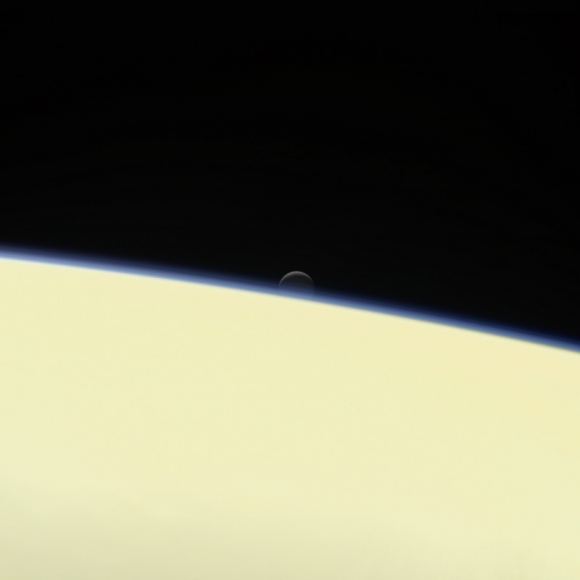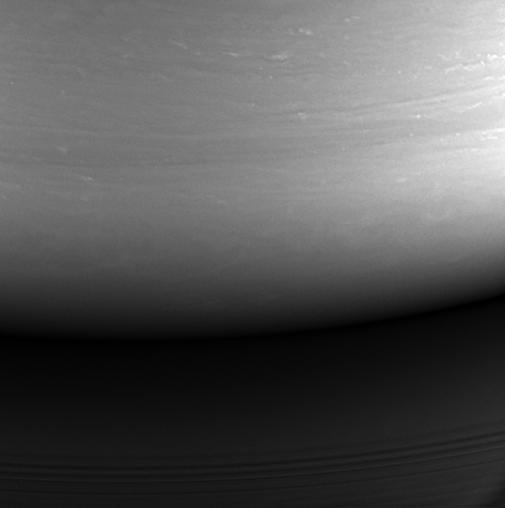Until the very end, Cassini displayed just how robust and enduring this spacecraft has been throughout its entire 20 years in space and its 13-year mission at Saturn. As Cassini plummeted through the ringed-planet's atmosphere, its thrusters fought the good fight to keep the antenna pointed at Earth for as long as possible, sending as much of the last drops of science data as it could.
Cassini endured about 40 seconds longer than expected before loss of signal was called at 11:55:46 UTC
"I hope you're all deeply proud as this accomplishment," said Cassini Project Manager Earl Maize in JPL's Mission Control Center after Cassini's signal was lost. "This has been an incredible mission, and incredible spacecraft and an incredible team. I'm going to call this the end of mission. Project Manager off the net."
Of course, the actual demise of Cassini took place about an hour and 23 minutes before, as it took that long for the signal to travel the 1.5 billion km distance from Saturn to Earth.
"This is a bittersweet moment for all of us," said JPL Director Mike Watkins, "but I think it is more sweet than bitter because Cassini has been such an incredible mission. This is a great time to celebrate the hard work and dedication of those who have worked on this mission."
Watkins added that almost everything we know about Saturn comes from the Cassini mission. "It made discoveries so compelling that we have to back," he said. "We will go back and fly through the geysers of Encleadus and we'll go back to explore Titan… These are incredibly compelling targets."

Cassini program manager at JPL, Earl Maize, left, and spacecraft operations team manager for the Cassini mission at Saturn, Julie Webster, right, embrace after the Cassini spacecraft plunged into Saturn, Friday, Sept. 15, 2017 at NASA's Jet Propulsion Laboratory in Pasadena, California. Photo Credit: (NASA/Joel Kowsky)
Cassini launched on Oct. 15, 1997, and arrived at Saturn's in 2004. It studied Saturn's rings and sent back postcards almost every day of its journeys around the Saturn system, pictures of complex moons, the intriguing rings and the giant gas planet.
It revealed the moon Enceladus as one of the most geothermally active places in our solar system, showing it to be one of the prime targets in the search for life beyond Earth.

Saturn's active, ocean-bearing moon Enceladus sinks behind the giant planet in a farewell portrait from NASA's Cassini spacecraft.
Credits: NASA/JPL-Caltech/Space Science Institute
Also, piggybacking along was the Huygens probe to study Saturn's largest moon, Titan. This landing in 2005 was the first spacecraft to land in the outer solar system.
During its final plunge, Cassini's instruments captured data on Saturn's atmosphere, sending a strong signal throughout. As planned, data from eight of Cassini's science instruments will be providing new insights about Saturn, including hints about the planet's formation and evolution, and processes occurring in its atmosphere.
This death plunge ensures Saturn's moons will remain pristine for future exploration.
Over 260 scientists from 17 countries and hundreds of engineers worked with Cassini throughout the entire mission. During Cassini's final days, mission team members from all around the world gathered at JPL to celebrate the achievements of this historic mission.
Here is the last picture taken by Cassini's cameras, showing the place where Cassini likely met its demise:

This monochrome view is the last image taken by the imaging cameras on NASA's Cassini spacecraft. It looks toward the planet's night side, lit by reflected light from the rings, and shows the location at which the spacecraft would enter the planet's atmosphere hours later. Credit: NASA/JPL-Caltech/Space Science Institute
If you can't get enough of Cassini, there will be more information coming about this final data, and of course, you can go look at all the images it has sent back here. Also, NASA has provided an ebook for download that includes information and images from the mission.
No comments:
Post a Comment